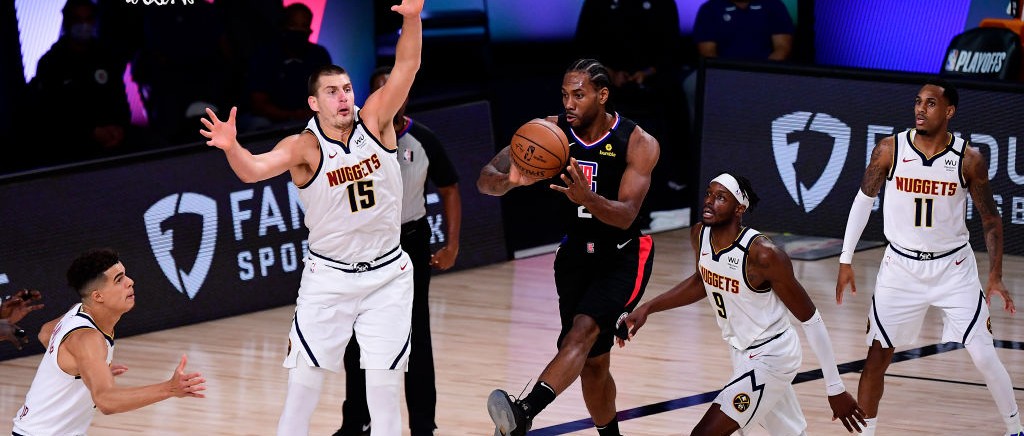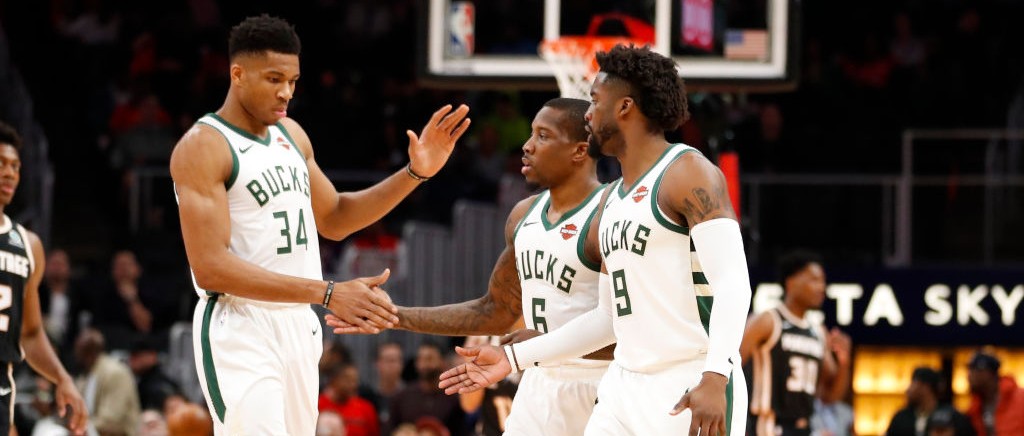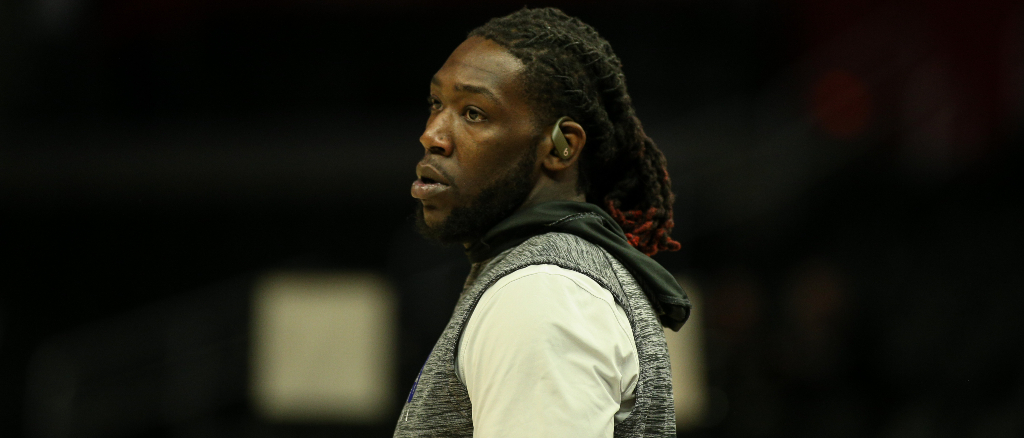Two of the three title favorites in the NBA failed to make it out of the second round of the playoffs, as the Milwaukee Bucks and Los Angeles Clippers each suffered rather stunning defeats in their respective conference semifinal series.
For both teams, it was an inability to finish games that pushed them to an early exit from the Disney Bubble, with the Clippers blowing three consecutive double-digit leads against a feisty Nuggets squad that flat-out dominated them in the second half of Games 5-7. The Bucks, meanwhile, were unable to answer the bell when Jimmy Butler and the Heat turned it on in the fourth quarter. In the wake of those two disappointing ends to the season, there’s been plenty of chatter about what comes next for both franchises, which enter critical seasons next year given their superstars can all enter free agency if they want in 2021.
The hardest thing to do in situations like the Clippers and Bucks find themselves in is to figure out what went wrong and how to fix it, because for teams that showed, at various times, the ability to be completely dominant, falling short by as much as they did is a shock to the system. Both can pin this on plenty of excuses, from the disjointed nature of resuming a title chase after a four-plus month layoff, to injuries and personal emergencies that kept them from being together on the court once the Bubble minicamp began.
There’s certainly validity to that, but there’s also something more at play. For Milwaukee, they didn’t lose a coin-flip series, they got outplayed in critical moments and their best player was neutralized by a gameplan they’ve now seen a number of times in the playoffs and failed to counter and adapt to. For L.A., they had full control of the series — and control of all three games they lost down the stretch — only to fail to put away a Denver team that showed more heart and willed themselves past the more talented Clippers.

Blame lies at all levels, and the hardest thing for both teams is to figure out who can learn from their mistakes and who needs to be replaced. Both coaches refused to make changes to their rotations even as evidence presented itself that they needed to. Montrezl Harrell’s minutes against the Nuggets were a disaster, but Doc Rivers insisted on continuing to match him up with Nikola Jokic. Mike Budenholzer’s insistence on going 10-deep with his roster and continuing to limit the minutes of Giannis Antetokounmpo and Khris Middleton to the mid-30s drove just about everyone that watched the series insane, particularly as we saw other teams ramp up the minutes of their best players (as happens every postseason). Both of those coaches seem safe, but must learn from their mistakes and reckon with the need to be more adaptive to matchups and the realities of the postseason going forward.
As for the superstars on each team, there’s plenty to look at. The Game 7 performance from Paul George and Kawhi Leonard was rather stunning. They were shut out in the fourth quarter as Denver ran away with the win. Leonard, for his Herculean efforts last year and spectacular play against Dallas, seemed bothered by the Nuggets’ scheme and never quite found his usual level of efficiency as they sent doubles and pressure at him. George was unable to consistently alleviate pressure from Leonard, shooting well one game and then disappearing the next. Their partnership has to figure out how to work off of one another better to create problems for defenses in scheming for them, something that simply didn’t happen late in their second round series.
For Giannis, it might be time to adjust his focus on where he really needs to get better. The focus on his three-point shooting might be misguided, as it’s his inability to score in the in-between zone — from the foul line to the restricted area — that seems to hold him back the most. Becoming more diverse in his ability to score while driving by adding a floater and/or short pull-up, rather than simply being a battering ram with a lethal Euro-step, would make it far more difficult to simply build a wall and neutralize his effectiveness. Like George, Middleton has to be more consistent in what he gives the Bucks, as he would have a great half and then slow down when the Bucks needed star production for 48 minutes.
These stars likewise aren’t going anywhere, which leaves one area for there to be real adjustments made to these teams: the supporting cast. But it’s also where things get tricky. Both teams enter the offseason without any cap space, meaning options for free agent additions are limited to exceptions and minimum deals, and on top of that, the perceived strength of both teams was their depth. They must figure out which players can still fit in and which, to steal LeBron’s line, need to fit out and go elsewhere.
In Milwaukee, Eric Bledsoe shoulders the most blame as the third highest-paid player on the Bucks and the one whose playoffs woes have been the most consistent since arriving to the team three years ago. For whatever reason, when the playoffs arrive, Bledsoe’s productivity craters. This year, he remained a positive on the defensive end, at least, but he continued to struggle shooting the ball (25 percent from three) and was not consistent enough at getting to the rim to alleviate pressure from Antetokounmpo and Middleton to be the sole creators on offense. It would seem that we have enough evidence to this point to say it’s just not a fit in Milwaukee, but the question remains whether the Bucks can get anything of real value for Bledsoe on the trade market, as his value for a fellow contender isn’t exactly high right now given his playoff history.

Brook Lopez remains a cornerstone piece, both with what he does anchoring the defense and his ability to stretch the floor as a shooter, and he seems like a lock to return. Donte DiVincenzo was the bright spot of their younger rotation players, and it’s possible they elevate him to a greater role next season. Wesley Matthews was excellent defensively and his floor spacing is a welcome touch, so Milwaukee should want him back. Everyone else, though, probably should be up for evaluation. That’s not to say they need to change the entirety of their roster aside from those five players, but I don’t think anyone else is safe from being part of a trade package to move off of Bledsoe or a lock to be retained if their deal is running up.
George Hill went from the league’s best spot-up three-point shooter in the regular season at 46.8 percent to a slightly below average 34.8 percent three-point shooter in the playoffs. Pat Connaughton was targeted at times on defense and struggled to be a factor offensively. Kyle Korver shot the ball well overall, but his minutes were a true roll of the dice defensively, plus playing him took away a ball-handling option on the perimeter. Marvin Williams played the most minutes of any of the reserves in the frontcourt and was great, but he’s now retired and must be replaced.
The Bucks’ top priority has to be trying to upgrade the point guard spot from Bledsoe, even if they’re not going to participate in the Chris Paul sweepstakes. Beyond that, they are going to need to bolster their frontcourt rotation behind Lopez and, if there are no Bledsoe takers, shuffling the deck on the wing and seeking out some more guys that can put the ball on the floor and create. The Bucks have enough data at this point to know running it back simply isn’t enough and changes must be made, but finding the right moves to make upgrades with an eye on the playoffs rather than regular season depth is easier said than done, especially for a team that won’t have cap space to make splash signings in free agency.
For the Clippers, things are even more complicated. While the Bucks have seen this same squad flame out twice now, L.A. has just this one, very strange season to look back on with this team, and they have some key players to make contract decisions on. As mentioned previously, Harrell’s minutes against the Nuggets were a disaster, but the Sixth Man of the Year enjoyed a tremendous season up until the stoppage and then missed significant time in the Bubble dealing with the loss of his grandmother. He now enters free agency looking for a new deal after ending his season on a sour note, and the Clippers have to determine whether his postseason play this year was the result of extenuating circumstances or represents a significant ceiling on his impact on a championship team.
That’s not easily done and certainly represents the most difficult decision this offseason for the Clippers, because the money they allocate (or don’t) to Harrell will dictate the rest of their moves. If they choose not to re-sign Harrell, the most obvious and pressing need would be to address their frontcourt rotation. Ideally they will get JaMychal Green to pick up a $5 million player option to stay around or else they get very thin upfront. Reaching an agreement to keep Harrell makes sense, if for no other reason than letting him walk doesn’t open up any cap space and he’s likely going to still be the best big they can sign this summer thanks to his Bird rights.

If that ends up being the case, the options for upgrading the roster are even fewer. They brought Marcus Morris and Reggie Jackson in this season to bolster their depth on the wing and at point guard, but only Morris cemented his spot in the rotation. He’s a free agent this offseason and could command plenty of interest elsewhere given his emergence as an above-average three-point shooter. L.A. would probably like to keep him around, but being able to pay what he costs (he was making $15 million this year) might be tricky. At point guard, they just paid Patrick Beverley handsomely, but could use a more creative offensive player on the roster, something they hoped Jackson could bring but simply didn’t work out. I’d expect them to go searching for someone to fill that role, but the cap crunch in L.A., like in Milwaukee, means barring major shakeups via trade, they’ll have to hope for internal improvement and filling gaps around the fringes.
And that is the crux of the issue for both teams. These aren’t young teams that suddenly became contenders and have cap space to play with; they were built this past season to win a title and simply failed to do so. That means there isn’t an easy fix and the realities of the NBA’s financial situation amid the pandemic further tighten the belts on what they will be capable of doing to their rosters this offseason. The Clippers cited chemistry issues as part of their problem this postseason, which isn’t exactly what you want to hear when your best option might be “run it back.” For Milwaukee, it seems less an issue of chemistry and more an issue of predictability and stubbornness that has placed them in this position, and as such, making changes might give them some more adaptability.
As Draymond Green once said, there are 16-game players and there are 82-game players. It seems both of these teams have a lot more of the latter than the former. The question both must ask is whether they have guys that can become playoff players or not, and whether anyone lurking on the market is more capable of adding that postseason punch they each desperately need.
Even so, barring blockbuster trades which neither team at the moment seem capable of or willing to pull off, the most likely result is a pair of squads that look very similar arriving to camp next season, whenever that is. As such, the improvement must start with the players and coaches already in these organizations, and the only way to do that is to have an honest reckoning with the failures of this postseason, rather than buying into the easy excuse of a postseason under unique and never before seen circumstances.
Given both teams’ problems this postseason stemmed from a stubborn refusal to adapt, there certainly has to be concerns that learning from their mistakes won’t be in the cards, and they’ll just hope next year is just, somehow, different.







